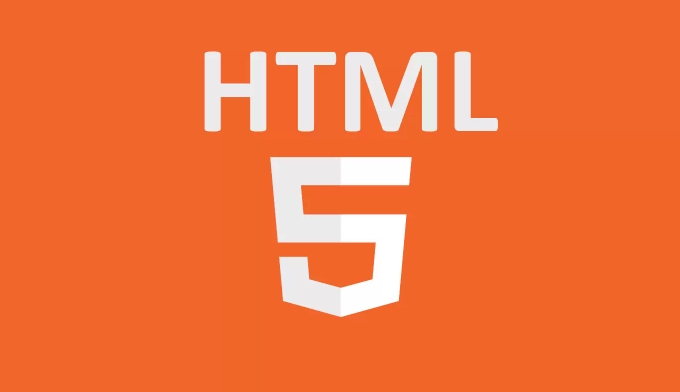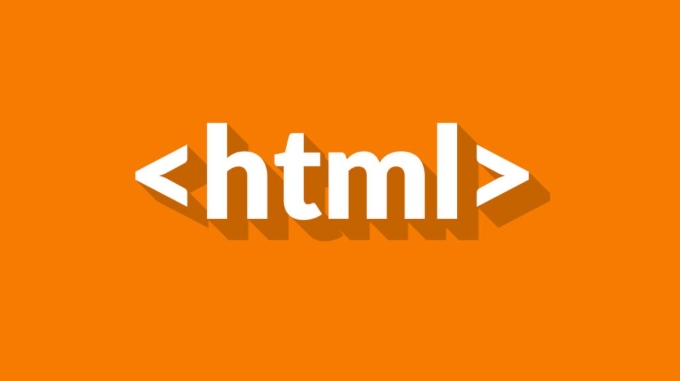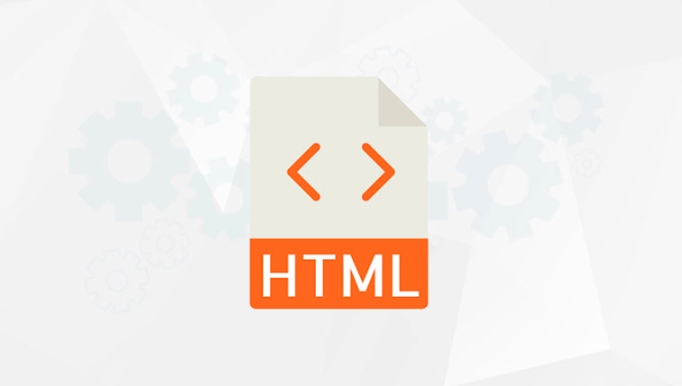Using Element as art guidance requires in-depth understanding of its design system and flexible customization. 1. First, master the design language of Element, including color, font, spacing and other specifications, as the basis for visual decision-making; 2. Unify the overall style by customizing theme variables (such as main color, rounded corners, margins) and fit the product positioning; 3. Overlay personalized visual packaging on the basis of components, such as background, animation, and icon replacement, to enhance uniqueness; 4. Formulate component usage specifications to ensure consistent styles in team collaboration, and unify the art direction visually and logically.

To put it bluntly, using Element as Art Direction is not something that can be done by just the components it comes with. Element is a UI framework, the core is to help you quickly build the interface, but if you can flexibly use its design system and style mechanism, it can actually help you to unify your visual style and even affect the overall art direction.
 element for art direction?" />
element for art direction?" />1. Understand the design language of Element
Element officially has a complete set of Design Guides , including colors, fonts, spacing, button styles, etc. These are not casually determined, and there is a clear design logic behind them. If you want to use Element to assist in the art direction, the first step is to "understand" this set of specifications.
- Color system : Element provides a complete set of theme color variables, such as main tone, success/warning/error status color, etc. You can formulate your brand tone based on these colors.
- Font typesetting : The default font size, line height, and title level are all considered, which are suitable for mid- and back-end products. If you are going to do creative projects, you may need to fine-tune these values.
- Component spacing and rounded corners : The margin/padding between components and the rounded corners of buttons/cards will all affect the overall visual experience. For example, small rounded corners appear capable, while large rounded corners are more friendly.
Suggestion: Print out the Element design document and paste it on the work station, or make it into a reference manual so that you will not go off the line when making visual decisions.
 element for art direction?" />
element for art direction?" />2. Customize the theme to unify the visual style
Element supports customizing themes through SCSS variables or online tools. This is one of the key means you use to control the direction of art.
You can start from the following aspects:
 element for art direction?" />
element for art direction?" />- Overwrite the main color (
$--color-primary) to keep the buttons, links, icons, etc. of the entire system consistent - Modify the rounded corners of the component (
$--border-radius-base) to adjust whether the overall style is modern or traditional - Control component margins and inner margins to determine whether the page is compact or has more white space
For example: If your product is a younger and lively social product, you can change the main color to a more jumpy color, such as orange and purple; at the same time, increase the padding and rounded corners of the button to make the interactive area look more friendly.
Tips: Use
element-themetool to generate theme files in batches, integrate them into the project with Webpack or Vite, and automatically update the entire site after modification.
3. Personalized packaging is made with visual layer
Although the Element component is practical, it is easy to use it directly to "standard". At this time, you need to add a layer of visual packaging to make it conform to the artistic tone of your project.
Common practices include:
- Wrap a layer of your own class outside the Element component, adding visual elements such as gradient background, shadows, and animation effects.
- Replace the icon library without using the default SVG icon of Element, and replace it with the iconfont or Lottie animation exclusive to your project.
- Interactive components such as dialog boxes, notifications, load status, etc., you can replace the default style with plug-ins or custom components.
For example, an e-commerce backend project may add card-style decoration and add hover effects to the table component of Element to make the data display more layered.
4. Establish component usage specifications to avoid confusion in style
Art direction is not just a visual aspect, but also how to use components. If you allow team members to combine Element components at will, the final interface may be inconsistent.
We recommend that you develop a lightweight component usage guide , including:
- Which components can be used in what scenarios
- How to select buttons in different states (primary / default / text)
- Which form layout is recommended (vertical/horizontal)
- How to organize the content structure of pop-up windows
This is actually a reflection of the "art direction" - it determines whether the user sees not only the color shape, but also whether the information presentation method is unified and professional.
Basically that's it. Element itself is not created for creative design, but it provides a stable starting point. As long as you understand its underlying logic and are willing to superimpose your own visual language on it, it can completely become a part of your art direction.
The above is the detailed content of How to use the element for art direction?. For more information, please follow other related articles on the PHP Chinese website!

Hot AI Tools

Undress AI Tool
Undress images for free

Undresser.AI Undress
AI-powered app for creating realistic nude photos

AI Clothes Remover
Online AI tool for removing clothes from photos.

Clothoff.io
AI clothes remover

Video Face Swap
Swap faces in any video effortlessly with our completely free AI face swap tool!

Hot Article

Hot Tools

Notepad++7.3.1
Easy-to-use and free code editor

SublimeText3 Chinese version
Chinese version, very easy to use

Zend Studio 13.0.1
Powerful PHP integrated development environment

Dreamweaver CS6
Visual web development tools

SublimeText3 Mac version
God-level code editing software (SublimeText3)

Hot Topics
 Audio and Video: HTML5 VS Youtube Embedding
Jun 19, 2025 am 12:51 AM
Audio and Video: HTML5 VS Youtube Embedding
Jun 19, 2025 am 12:51 AM
HTML5isbetterforcontrolandcustomization,whileYouTubeisbetterforeaseandperformance.1)HTML5allowsfortailoreduserexperiencesbutrequiresmanagingcodecsandcompatibility.2)YouTubeofferssimpleembeddingwithoptimizedperformancebutlimitscontroloverappearanceand
 Adding drag and drop functionality using the HTML5 Drag and Drop API.
Jul 05, 2025 am 02:43 AM
Adding drag and drop functionality using the HTML5 Drag and Drop API.
Jul 05, 2025 am 02:43 AM
The way to add drag and drop functionality to a web page is to use HTML5's DragandDrop API, which is natively supported without additional libraries. The specific steps are as follows: 1. Set the element draggable="true" to enable drag; 2. Listen to dragstart, dragover, drop and dragend events; 3. Set data in dragstart, block default behavior in dragover, and handle logic in drop. In addition, element movement can be achieved through appendChild and file upload can be achieved through e.dataTransfer.files. Note: preventDefault must be called
 What is the purpose of the input type='range'?
Jun 23, 2025 am 12:17 AM
What is the purpose of the input type='range'?
Jun 23, 2025 am 12:17 AM
inputtype="range" is used to create a slider control, allowing the user to select a value from a predefined range. 1. It is mainly suitable for scenes where values ??need to be selected intuitively, such as adjusting volume, brightness or scoring systems; 2. The basic structure includes min, max and step attributes, which set the minimum value, maximum value and step size respectively; 3. This value can be obtained and used in real time through JavaScript to improve the interactive experience; 4. It is recommended to display the current value and pay attention to accessibility and browser compatibility issues when using it.
 How can you animate an SVG with CSS?
Jun 30, 2025 am 02:06 AM
How can you animate an SVG with CSS?
Jun 30, 2025 am 02:06 AM
AnimatingSVGwithCSSispossibleusingkeyframesforbasicanimationsandtransitionsforinteractiveeffects.1.Use@keyframestodefineanimationstagesforpropertieslikescale,opacity,andcolor.2.ApplytheanimationtoSVGelementssuchas,,orviaCSSclasses.3.Forhoverorstate-b
 HTML audio and video: Examples
Jun 19, 2025 am 12:54 AM
HTML audio and video: Examples
Jun 19, 2025 am 12:54 AM
Audio and video elements in HTML can improve the dynamics and user experience of web pages. 1. Embed audio files using elements and realize automatic and loop playback of background music through autoplay and loop properties. 2. Use elements to embed video files, set width and height and controls properties, and provide multiple formats to ensure browser compatibility.
 What is WebRTC and what are its main use cases?
Jun 24, 2025 am 12:47 AM
What is WebRTC and what are its main use cases?
Jun 24, 2025 am 12:47 AM
WebRTC is a free, open source technology that supports real-time communication between browsers and devices. It realizes audio and video capture, encoding and point-to-point transmission through built-in API, without plug-ins. Its working principle includes: 1. The browser captures audio and video input; 2. The data is encoded and transmitted directly to another browser through a security protocol; 3. The signaling server assists in the initial connection but does not participate in media transmission; 4. The connection is established to achieve low-latency direct communication. The main application scenarios are: 1. Video conferencing (such as GoogleMeet, Jitsi); 2. Customer service voice/video chat; 3. Online games and collaborative applications; 4. IoT and real-time monitoring. Its advantages are cross-platform compatibility, no download required, default encryption and low latency, suitable for point-to-point communication
 How to create animations on a canvas using requestAnimationFrame()?
Jun 22, 2025 am 12:52 AM
How to create animations on a canvas using requestAnimationFrame()?
Jun 22, 2025 am 12:52 AM
The key to using requestAnimationFrame() to achieve smooth animation on HTMLCanvas is to understand its operating mechanism and cooperate with Canvas' drawing process. 1. requestAnimationFrame() is an API designed for animation by the browser. It can be synchronized with the screen refresh rate, avoid lag or tear, and is more efficient than setTimeout or setInterval; 2. The animation infrastructure includes preparing canvas elements, obtaining context, and defining the main loop function animate(), where the canvas is cleared and the next frame is requested for continuous redrawing; 3. To achieve dynamic effects, state variables, such as the coordinates of small balls, are updated in each frame, thereby forming
 How to check if a browser can play a specific video format?
Jun 28, 2025 am 02:06 AM
How to check if a browser can play a specific video format?
Jun 28, 2025 am 02:06 AM
To confirm whether the browser can play a specific video format, you can follow the following steps: 1. Check the browser's official documents or CanIuse website to understand the supported formats, such as Chrome supports MP4, WebM, etc., Safari mainly supports MP4; 2. Use HTML5 tag local test to load the video file to see if it can play normally; 3. Upload files with online tools such as VideoJSTechInsights or BrowserStackLive for cross-platform detection. When testing, you need to pay attention to the impact of the encoded version, and you cannot rely solely on the file suffix name to judge compatibility.






